Willem de Kooning e l’Italia

Willem de Kooning, Untitled #12, 1969. Bronzo 19.1x23.5x14.6 cm. Raymond and Patsy NasherCollection, NasherSculpture Center, Dallas © 2023 The Willem de Kooning Foundation, SIAE
Dal 16 April 2024 al 15 September 2024
Venezia
Luogo: Gallerie dell’Accademia
Indirizzo: Calle della Carità 1050
Orari: Lunedì: dalle 8.15 alle 14.00 Da Martedì a Domenica: dalle 8.15 alle 19.15
Curatori: Gary Garrels e Mario Codognato
Sito ufficiale: http://www.gallerieaccademia.it
Willem de Kooning, uno degli artisti più rivoluzionari e influenti del ventesimo secolo, sarà al centro di un’importante mostra alle Gallerie dell’Accademia di Venezia.
L’esposizione Willem de Kooning e l’Italia sarà inaugurata il 16 aprile 2024 in concomitanza con la 60° Mostra Internazionale d’Arte della Biennale di Venezia e rimarrà aperta fino al 15 settembre 2024.
Come annunciato oggi, 20 settembre 2023, nel corso della conferenza stampa tenutasi alle Gallerie dell’Accademia alla presenza del direttore delle Gallerie Giulio Manieri Elia, l’esposizione sarà la prima a indagare l’importanza dei soggiorni di de Kooning in Italia, risalenti al 1959 e al 1969. I curatori, Gary Garrels e Mario Codognato, approfondiranno, per la prima volta, l’influenza avuta dai viaggi in Italia sui successivi dipinti, disegni e sculturerealizzati dall’artista in America.
Il percorso espositivo, progettato in collaborazione con lo studio UNA/FWR Associati diretto dall’architetto Giulia Foscari, riunirà circa 75 opere tra dipinti, sculture e disegni, che attraversano quattro decenni dell’arte di de Kooning, dagli anni Cinquanta agli anni Ottanta, dando vita alla più ampia mostra dell’artista mai organizzata in Italia.
La prima sala comprenderà una selezione di Black and White Rome, grandi e straordinari disegni realizzati da William de Kooning durante la sua prima, lunga visita nella capitale, nel 1959. I disegni saranno esposti insieme a opere della fine degli anni Cinquanta, realizzate nel periodo precedente la prima visita dell’artista in Italia: i dipinti Parkway Landscape rivelano la forza del suo lavoro intorno alla metà del Novecento.
Tre dei più noti Pastoral Landscapes, dipinti a New York nel 1960 con il ricordo persistente del viaggio in Italia, Door to the River, A Tree in Naples e Villa Borghese, saranno esposti insieme per la prima volta. Questa sezione comprenderà anche grandi quadri figurativi dipinti a metà degli anni Sessanta, che hanno aperto la strada al suo interesse per la scultura.
In una sala dedicata alla scultura saranno esposti tredici piccoli bronzi realizzati da de Kooning a Roma. Create dopo un incontro fortuito con un amico scultore, le opere sono il risultato dei primi esperimenti dell’artista con la creta. Queste prove lo porteranno a produrre, tra il 1972 e il 1974 a New York, un nuovo nucleo di sculture. Per un artista che hasempre enfatizzato l’aspetto materiale del suo lavoro, le opere plastiche gli hanno consentito di creare figure astratte attraverso l’istantaneità del senso del tatto. Sulle pareti circostanti saranno esposti quadri figurativi dipinti nello stesso periodo, accanto a grandiosi quadri astratti realizzati dal 1975 al 1977.
La mostra farà anche dialogare pittura e scultura con i disegni degli anni Sessanta e Settanta: tra le opere di maggior rilievo ci sono quattro disegni a inchiostro realizzati da de Kooning a Spoleto nel 1969, presentati accanto a una selezione complementare di disegni intimi, gestuali, concettualmente correlati con le sculture.
Nella sala successiva verrà proposta una gamma più ampia di disegni degli anni in cui l’artista frammenta la figura, spesso lasciando spazi vuoti a controbilanciare le sue linee vigorose.
L’ultima grande sala presenterà una selezione degli ultimi dipinti di de Kooning, risalenti agli anni Ottanta, in cui il linguaggio tridimensionale viene trasfigurato in una nuova poetica astratta. Questi quadri contengono riferimenti figurativi appena accennati e sono caratterizzati da tonalità chiare controbilanciate da fasce e zone di colore brillante. Sono tra le opere più sublimi dell’artista, nelle quali persiste un’eco dello stile barocco.
«Siamo convinti che proporre de Kooning sia stata la scelta giusta per diversi motivi» ha dichiarato Giulio Manieri Elia, direttore delle Gallerie dell’Accademia. «Innanzitutto, per la caratura dell’artista che penso sia superfluo discutere. Inoltre, per il tema approfondito, ovvero il suo rapporto con l’Italia, che ci è caro e ci è vicino. Si aggiunga che post mortem le sue opere sono state viste pochissimo nel nostro paese e l’ultima mostra a lui dedicata risale a diciotto anni fa. Infine, a convincerci è stata la qualità della selezione dei curatori, circa 75 opere che rappresentano buona parte delle fasi espressive di de Kooning».
«Willem de Kooning, per creare il suo lessico personale, ha attinto alla coralità di stimoli della vita quotidiana, quali luce e movimento» hanno aggiunto i curatori Gary Garrels e Mario Codognato. «L’impatto delle più svariate esperienze visive poteva offrire o generare un’idea per realizzare un nuovo disegno o dipinto. Osservando come l’ambiente di New York e di East Hampton abbia influenzato le sue opere, si ha l’impressione che lo stesso sia capitato a Roma. Durante questi periodi in Italia, de Kooning ha arricchito il suo linguaggio e ha rielaborato un nuovo modus operandi attraverso l’approfondimento dell’arte classica italiana e al contempo attraverso la frequentazione degli artisti italiani della sua generazione». «Per la Fondazione è un enorme piacere collaborare con le Gallerie dell’Accademia per presentare questa importante mostra» ha concluso Amy Schichtel, direttrice esecutiva di The Willem de Kooning Foundation «non soltanto perché offre la possibilità di condividere l’eccezionale visione di Willem de Kooning e dei curatori con una grande comunità internazionale, ma anche perché costituisce una straordinaria occasione per sviluppare la ricerca e la conoscenza dell’artista, offrendo una notevole opportunità alle migliaia di studenti provenienti da tutto il mondo in visita alle Gallerie. De Kooning è uno dei grandi innovatori americani e, come tale, riteniamo che la sua storia sia una fonte di ispirazione di importanza vitale per i nostri giovani».
Curata da Gary Garrels e Mario Codognato, la mostra è presentata in collaborazione con la Willem de Kooning Foundation, una fondazione privata finanziata dall’artista, che promuove lo studio e la conoscenza della sua vita e del suo lavoro attraverso ricerca, mostre e programmi educativi.
La mostra è accompagnata da un catalogo pubblicato da Marsilio Arte.
Willem de Kooning (1904, Rotterdam, Olanda – 1997, East Hampton, USA) è stato uno dei grandi artisti del ventesimo secolo. Ha ottenuto il consenso della critica alla Galleria Charles Egan nel 1948 con una mostra personale di dipinti non figurativi a olio e a smalto, densamente elaborati, tra i quali spiccano i celebri dipinti in bianco e nero.
Poco dopo, nel 1950, de Kooning ha realizzato Excavation, un’opera astratta di grande formato. Forse uno dei dipinti più importanti del ventesimo secolo, Excavation fu scelto tra le opere rappresentarono gli Stati Uniti alla 25° Biennale di Venezia dal 3 giugno al 15 ottobre 1950. De Kooning partecipò ad altre cinque Biennali (1954, 1956, 1978, 1986 e 1988).
Pittore anticonformista, che respingeva le norme stilistiche accettate dissolvendo il rapporto tra primo piano e sfondo e utilizzando il colore per creare gesti emotivi, astratti, de Kooning, con i colleghi della fine degli anni Quaranta e dei primi anni Cinquanta, è stato etichettato in vario modo: «Espressionista astratto», «Esponente dell’action painting» o semplicemente della «Scuola di New York».
È stato uno dei pochi artisti di rottura responsabili dello storico spostamento del centro dell’avanguardia artistica da Parigi a New York nel secondo dopoguerra.
Nel corso della sua vita de Kooning ha ricevuto molte onorificenze, tra cui, negli USA, la Medaglia presidenziale della libertà nel 1964. Le sue opere d’arte sono state esposte in migliaia di mostre e fanno parte delle collezioni permanenti di molte delle più prestigiose istituzioni artistiche del mondo, tra cui la Peggy Guggenheim Collection, Venezia; lo Stedelijk Museum, Amsterdam; la Tate Modern, Londra; il Museum of Modern Art, New York; il Solomon R. Guggenheim Museum, New York; il Metropolitan Museum of Art, New York; l’Art Institute of Chicago; lo Smithsonian Institution’s Hirshhorn Museum & Sculpture Garden, Washington D.C.; la National Gallery of Art, Washington, D.C. e la National Gallery of Australia, Canberra. Le principali pubblicazioni a lui dedicate sono state scritte da Gabriella Drudi, John Elderfield, Gary Garrels, Thomas Hess, Harold Rosenberg, Richard Shiff e Judith Zilzcer.
L’esposizione Willem de Kooning e l’Italia sarà inaugurata il 16 aprile 2024 in concomitanza con la 60° Mostra Internazionale d’Arte della Biennale di Venezia e rimarrà aperta fino al 15 settembre 2024.
Come annunciato oggi, 20 settembre 2023, nel corso della conferenza stampa tenutasi alle Gallerie dell’Accademia alla presenza del direttore delle Gallerie Giulio Manieri Elia, l’esposizione sarà la prima a indagare l’importanza dei soggiorni di de Kooning in Italia, risalenti al 1959 e al 1969. I curatori, Gary Garrels e Mario Codognato, approfondiranno, per la prima volta, l’influenza avuta dai viaggi in Italia sui successivi dipinti, disegni e sculturerealizzati dall’artista in America.
Il percorso espositivo, progettato in collaborazione con lo studio UNA/FWR Associati diretto dall’architetto Giulia Foscari, riunirà circa 75 opere tra dipinti, sculture e disegni, che attraversano quattro decenni dell’arte di de Kooning, dagli anni Cinquanta agli anni Ottanta, dando vita alla più ampia mostra dell’artista mai organizzata in Italia.
La prima sala comprenderà una selezione di Black and White Rome, grandi e straordinari disegni realizzati da William de Kooning durante la sua prima, lunga visita nella capitale, nel 1959. I disegni saranno esposti insieme a opere della fine degli anni Cinquanta, realizzate nel periodo precedente la prima visita dell’artista in Italia: i dipinti Parkway Landscape rivelano la forza del suo lavoro intorno alla metà del Novecento.
Tre dei più noti Pastoral Landscapes, dipinti a New York nel 1960 con il ricordo persistente del viaggio in Italia, Door to the River, A Tree in Naples e Villa Borghese, saranno esposti insieme per la prima volta. Questa sezione comprenderà anche grandi quadri figurativi dipinti a metà degli anni Sessanta, che hanno aperto la strada al suo interesse per la scultura.
In una sala dedicata alla scultura saranno esposti tredici piccoli bronzi realizzati da de Kooning a Roma. Create dopo un incontro fortuito con un amico scultore, le opere sono il risultato dei primi esperimenti dell’artista con la creta. Queste prove lo porteranno a produrre, tra il 1972 e il 1974 a New York, un nuovo nucleo di sculture. Per un artista che hasempre enfatizzato l’aspetto materiale del suo lavoro, le opere plastiche gli hanno consentito di creare figure astratte attraverso l’istantaneità del senso del tatto. Sulle pareti circostanti saranno esposti quadri figurativi dipinti nello stesso periodo, accanto a grandiosi quadri astratti realizzati dal 1975 al 1977.
La mostra farà anche dialogare pittura e scultura con i disegni degli anni Sessanta e Settanta: tra le opere di maggior rilievo ci sono quattro disegni a inchiostro realizzati da de Kooning a Spoleto nel 1969, presentati accanto a una selezione complementare di disegni intimi, gestuali, concettualmente correlati con le sculture.
Nella sala successiva verrà proposta una gamma più ampia di disegni degli anni in cui l’artista frammenta la figura, spesso lasciando spazi vuoti a controbilanciare le sue linee vigorose.
L’ultima grande sala presenterà una selezione degli ultimi dipinti di de Kooning, risalenti agli anni Ottanta, in cui il linguaggio tridimensionale viene trasfigurato in una nuova poetica astratta. Questi quadri contengono riferimenti figurativi appena accennati e sono caratterizzati da tonalità chiare controbilanciate da fasce e zone di colore brillante. Sono tra le opere più sublimi dell’artista, nelle quali persiste un’eco dello stile barocco.
«Siamo convinti che proporre de Kooning sia stata la scelta giusta per diversi motivi» ha dichiarato Giulio Manieri Elia, direttore delle Gallerie dell’Accademia. «Innanzitutto, per la caratura dell’artista che penso sia superfluo discutere. Inoltre, per il tema approfondito, ovvero il suo rapporto con l’Italia, che ci è caro e ci è vicino. Si aggiunga che post mortem le sue opere sono state viste pochissimo nel nostro paese e l’ultima mostra a lui dedicata risale a diciotto anni fa. Infine, a convincerci è stata la qualità della selezione dei curatori, circa 75 opere che rappresentano buona parte delle fasi espressive di de Kooning».
«Willem de Kooning, per creare il suo lessico personale, ha attinto alla coralità di stimoli della vita quotidiana, quali luce e movimento» hanno aggiunto i curatori Gary Garrels e Mario Codognato. «L’impatto delle più svariate esperienze visive poteva offrire o generare un’idea per realizzare un nuovo disegno o dipinto. Osservando come l’ambiente di New York e di East Hampton abbia influenzato le sue opere, si ha l’impressione che lo stesso sia capitato a Roma. Durante questi periodi in Italia, de Kooning ha arricchito il suo linguaggio e ha rielaborato un nuovo modus operandi attraverso l’approfondimento dell’arte classica italiana e al contempo attraverso la frequentazione degli artisti italiani della sua generazione». «Per la Fondazione è un enorme piacere collaborare con le Gallerie dell’Accademia per presentare questa importante mostra» ha concluso Amy Schichtel, direttrice esecutiva di The Willem de Kooning Foundation «non soltanto perché offre la possibilità di condividere l’eccezionale visione di Willem de Kooning e dei curatori con una grande comunità internazionale, ma anche perché costituisce una straordinaria occasione per sviluppare la ricerca e la conoscenza dell’artista, offrendo una notevole opportunità alle migliaia di studenti provenienti da tutto il mondo in visita alle Gallerie. De Kooning è uno dei grandi innovatori americani e, come tale, riteniamo che la sua storia sia una fonte di ispirazione di importanza vitale per i nostri giovani».
Curata da Gary Garrels e Mario Codognato, la mostra è presentata in collaborazione con la Willem de Kooning Foundation, una fondazione privata finanziata dall’artista, che promuove lo studio e la conoscenza della sua vita e del suo lavoro attraverso ricerca, mostre e programmi educativi.
La mostra è accompagnata da un catalogo pubblicato da Marsilio Arte.
Willem de Kooning (1904, Rotterdam, Olanda – 1997, East Hampton, USA) è stato uno dei grandi artisti del ventesimo secolo. Ha ottenuto il consenso della critica alla Galleria Charles Egan nel 1948 con una mostra personale di dipinti non figurativi a olio e a smalto, densamente elaborati, tra i quali spiccano i celebri dipinti in bianco e nero.
Poco dopo, nel 1950, de Kooning ha realizzato Excavation, un’opera astratta di grande formato. Forse uno dei dipinti più importanti del ventesimo secolo, Excavation fu scelto tra le opere rappresentarono gli Stati Uniti alla 25° Biennale di Venezia dal 3 giugno al 15 ottobre 1950. De Kooning partecipò ad altre cinque Biennali (1954, 1956, 1978, 1986 e 1988).
Pittore anticonformista, che respingeva le norme stilistiche accettate dissolvendo il rapporto tra primo piano e sfondo e utilizzando il colore per creare gesti emotivi, astratti, de Kooning, con i colleghi della fine degli anni Quaranta e dei primi anni Cinquanta, è stato etichettato in vario modo: «Espressionista astratto», «Esponente dell’action painting» o semplicemente della «Scuola di New York».
È stato uno dei pochi artisti di rottura responsabili dello storico spostamento del centro dell’avanguardia artistica da Parigi a New York nel secondo dopoguerra.
Nel corso della sua vita de Kooning ha ricevuto molte onorificenze, tra cui, negli USA, la Medaglia presidenziale della libertà nel 1964. Le sue opere d’arte sono state esposte in migliaia di mostre e fanno parte delle collezioni permanenti di molte delle più prestigiose istituzioni artistiche del mondo, tra cui la Peggy Guggenheim Collection, Venezia; lo Stedelijk Museum, Amsterdam; la Tate Modern, Londra; il Museum of Modern Art, New York; il Solomon R. Guggenheim Museum, New York; il Metropolitan Museum of Art, New York; l’Art Institute of Chicago; lo Smithsonian Institution’s Hirshhorn Museum & Sculpture Garden, Washington D.C.; la National Gallery of Art, Washington, D.C. e la National Gallery of Australia, Canberra. Le principali pubblicazioni a lui dedicate sono state scritte da Gabriella Drudi, John Elderfield, Gary Garrels, Thomas Hess, Harold Rosenberg, Richard Shiff e Judith Zilzcer.
SCARICA IL COMUNICATO IN PDF
COMMENTI

-
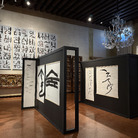 Dal 8 November 2025 al 11 January 2026
Venezia | Museo Correr
Dal 8 November 2025 al 11 January 2026
Venezia | Museo Correr
CARATTERI. Calligrafia e tipografia: Corea del Sud e Stati Uniti
-
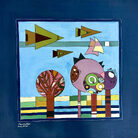 Dal 8 November 2025 al 22 February 2026
Brescia | Museo di Santa Giulia
Dal 8 November 2025 al 22 February 2026
Brescia | Museo di Santa Giulia
Material for an Exhibition. Storie, memorie e lotte dalla Palestina e dal Mediterraneo
-
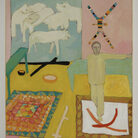 Dal 8 November 2025 al 18 January 2026
Perugia | Perugia, Spoleto e Gubbio
Dal 8 November 2025 al 18 January 2026
Perugia | Perugia, Spoleto e Gubbio
Mimmo Paladino. Antologica
-
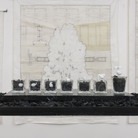 Dal 7 November 2025 al 25 January 2026
Roma | Museo Carlo Bilotti Aranciera di Villa Borghese
Dal 7 November 2025 al 25 January 2026
Roma | Museo Carlo Bilotti Aranciera di Villa Borghese
Silvia Scaringella. Deus sive natura
-
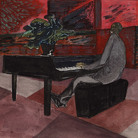 Dal 5 November 2025 al 1 March 2026
Asti | Palazzo Mazzetti
Dal 5 November 2025 al 1 March 2026
Asti | Palazzo Mazzetti
PAOLO CONTE. Original
-
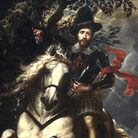 Dal 28 October 2025 al 15 February 2026
Brescia | Pinacoteca Tosio Martinengo
Dal 28 October 2025 al 15 February 2026
Brescia | Pinacoteca Tosio Martinengo
Peter Paul Rubens. Giovan Carlo Doria a cavallo


